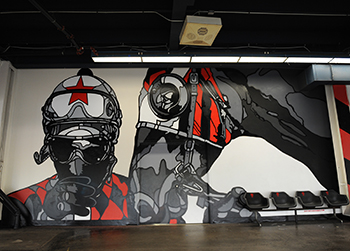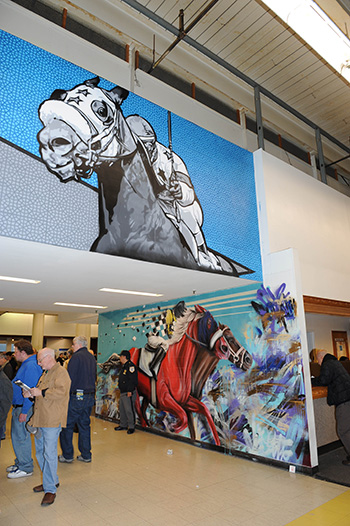The New York Racing Association went through a year of turmoil in 2012, a year of rebuilding in 2013, and now is entering a year of experimentation.
As is the nature of all experiments, not all of them will fly, but that’s OK as long as new ideas continue being tried. NYRA CEO Chris Kay kicked off the 40th annual Arizona Global Symposium on Racing & Gaming Dec. 10 with an overview of some experiments that have been tried and others that are on the horizon.
Within the first 10 minutes of his speech, Kay used the words “guest” and/or “experience” about a dozen times. One of NYRA’s big goals in the coming year, Kay said, is to change the perception of the racetrack from being a place to avoid to being a place that’s cool, particularly among consumers 18-35—the most important demographic to all businesses, according to Kay.
“By virtue of being a short distance to Manhattan and Brooklyn, (Aqueduct) is close to a large population of those 18-35-year-olds; the same young adult crowd that tend to go to the Belmont Stakes (gr. I), have disposable income, and are known to be enthusiastic about retro activities like bowling, arcade games, and pool,” Kay said.

The challenge is obvious. Aqueduct Racetrack was built in 1955 and has the aesthetic charm of a commercial warehouse when compared with the professional stadiums and arenas built within the last 15 years. In order to try to give the place a new vibe, NYRA invited 14 street artists armed with cans of spray paint to liven up the drab walls throughout the grandstand. Over three nights and with the only direction from Paul Kelleher, NYRA’s corporate development executive, to “do something that was in the spirit of the place,” according to the New York Times, the artists transformed white cinder block into canvases.
“We brought out a lot of new fans to our racetrack; we created buzz,” Kay said.

But once the fans are on the grounds comes the next equally vital piece of the puzzle; they have to want to come back.
This is where Kay said NYRA needs to ramp up the customer service machine.
Kay is not a racing guy. He’s a business guy with experience in retail and the hospitality industry, and he doesn’t operate by instinct. He goes by the numbers, using research to identify his audience, collects data to monitor behavior, and analyzes the metrics to determine success or failure.
“We have to create a new experience with the new and casual fans—say ‘good morning’ when they arrive and ‘good evening’ when they leave. Then we need to collect data from the moment they arrive in order to anticipate their needs.
“To succeed, you need to focus with laser-like precision on the guest,” he said.
How does the call to improve customer service square with a proposal to increase admission fees at Saratoga Race Course and Belmont Park? Well it isn’t sitting well with some of the NYRA board members, and it is our humble opinion that businesses asking people to gamble should not be charging for entrance or parking anyway, but if the experience at the racetrack improves at all—then a day at the track even at the higher rate—will still be an entertainment bargain. The proposed fee hike would take general admission from $3 to $5 and admission to the clubhouse from $5 to $8. You can’t get into a New York Mets home game for under $18.
Making the big-event days—such as Belmont Stakes day—bigger, turning new senior vice president of racing Martin Panza loose to create new event days, and adding 550 new flat screen televisions and high-definition video boards throughout the tracks are other improvements in the works. Like we said, every new idea won’t be a good one, but at least NYRA is out there pushing and experimenting. If there is one thing racing can’t get enough of, it’s new ideas.




